15th July 2023
St Swithin’s day if thou dost rain
For forty days it will remain
St Swithin’s day if thou be fair
For forty days ‘twill rain nae mare"
St Swithin (or Swithun in some spellings) was the Anglo-Saxon Bishop of Winchester (d 862) . His association with rain is attributed to his request for burial in the churchyard not within the cathedral. A churchyard is accessible not only to the footsteps of common people but also the pattering of the rain. His body was subsequently moved to Winchester Cathedral, it being deemed inappropriate for a Saint to be buried in the graveyard amongst common folk. After St Swithin’s reburial there was torrential rain for forty days and hence the legend – retribution for going against the Saint’s wishes. Charles Raymond Dillon in Superstitions and Folk Remedies, notes that orchard owners hope for rain on St Swithin's Day. A good downpour came with St Swithin’s blessing, the christening of the apples. Steve Roud writes in “The English Year” of a Warwickshire saying documented by folklorists A R Wright and T E Lones: “You won’t have the jam til the apples are christened…We never eat or cut apples until St Swithin has christened them.” Unsurprisingly, bobbing for apples is a St Swithin’s Day custom.
Prayers were also offered to St Peter (June 29th). Sir James Frazer in his book The Golden Bough, writes that in France the image of the Saint was dipped in water in the hope that prayers would be answered and rain would be procured.
Rain is good for the crops and annoying for the picnicker. A conundrum. Humans are rarely content but somewhere between the thankful farmer’s rain and picnicker’s sunshine there is a rainbow.
The poem Still falls the Rain by Dame Edith Sitwell was written during the London Blitz. It compares the tragedy of wartime suffering with the crucifixion of Christ.
“Still falls the Rain -
Then - O Ile leape up to my God: who pulled me doune -
See, see where Christ’s blood streams in the firmament:”
Rain, representing Christ’s blood in the poem, is associated with sadness and pain. The repetition of “Still falls the rain” emphasising rainfall’s power for destruction but also for renewal . Water washes our clothes, yet when the heavens open, we rush outside to get washing from the line and go inside again as fast as we can.
Yesterday, I gathered chanterelles in damp woodland under grey clouds. The trees provided a protective canopy when the grey curtain was eventually pulled back and the heavens opened. It was soft, gentle Scottish rain. However, when I left the woodland umbrella I felt the darker force of nature – I got wet. I’d lost
There is an inner satisfaction when the rain is battering against the shutters and yet at times there is a contentment when exposed to the full force of a hailstorm. Exhilarating. The word Petrichor refers to the smell of rain on dry soil. Humans are said to have to a heightened sensitivity to this odor. This may hark back to hunter gatherer days, before meteorologists, when clever interpretation of weather offered protection from storms and indeed, heralded fungi foray opportunities. With an apology to those with anosmia - rain smells good. Petrichor is the result of soil bacteria secreting geosmin when producing spores. It’s one of nature’s curiosites.
In the words of the Irish blessing:
“May the road rise up to meet you. May the wind be always at your back. May the sun shine warm upon your face; the rains fall soft upon your fields
and until we meet again, may God hold you in the palm of His hand.”
It would seem somewhat incongruous to offer an apple recipe in July in spite of the fruits association with St Swithin because it is not yet in season. Chanterelles are a summer mushroom and heavy summer rain will encourage growth. An excellent wild ingredient that loves rain is my ingredient to celebrate St Swithin’s Day.
Once you understand this mushroom’s preferred geography and get your foraging eye in, you will see them everywhere. I clearly remember Maxim aged five shouting that he had discovered chanterelle heaven. ‘The sky has fallen down and its orange not blue.’
Not all chanterelles are orange and indeed within the oranges there are subspecies with varying colours and shapes. Foraging mushooms should not be undertaken unless you are 100% sure that you can identify the species.
Don’t Munch on a Hunch. I credit this phrase (used in my book The Forager’s Kitchen Handbook) to the forager Mark Williams.
Chanterelles smell of apricots and have a delicious earthy, umami flavour. The mushrooms have a symbiotic relationship with the roots of trees (they feed off each other). Chanterelle hunters need to go into the woods, not open pasture.
Harvest enough for your own table, no more. Don’t be greedy.
My favourite Mushroom book by Antonio Carluccio
I cut the stems with a knife. Whether this encourages regrowth I am unsure, but it certainly reduces kitchen preparation time. It is good to rehouse slugs in the woods. Knock them off their supper table. One shake usually suffices. The canny forager is selective and will leave moss and dirt clad specimens for the wildlife.
Use a basket not a plastic bag to distribute spores as you meander through the woods. Chanterelles dry well.
Once dry, blitz in a food processor for a powder with an umami fix that you can sprinkle as you cook through the year.

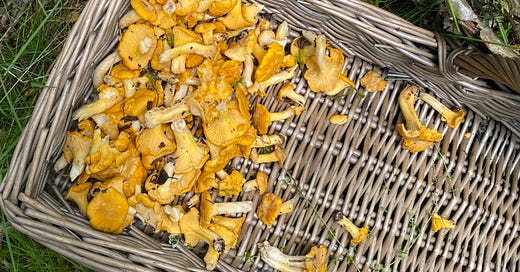



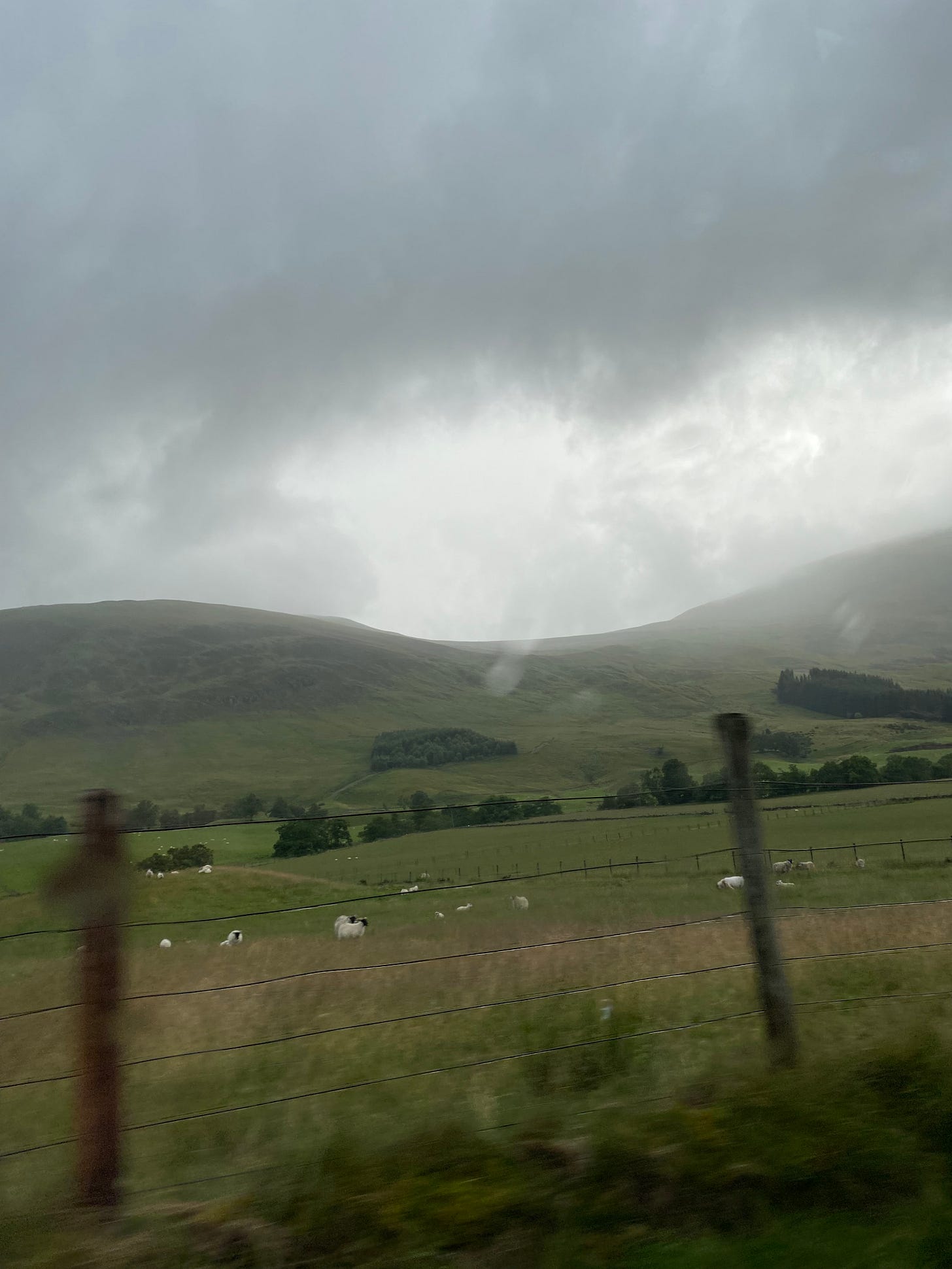
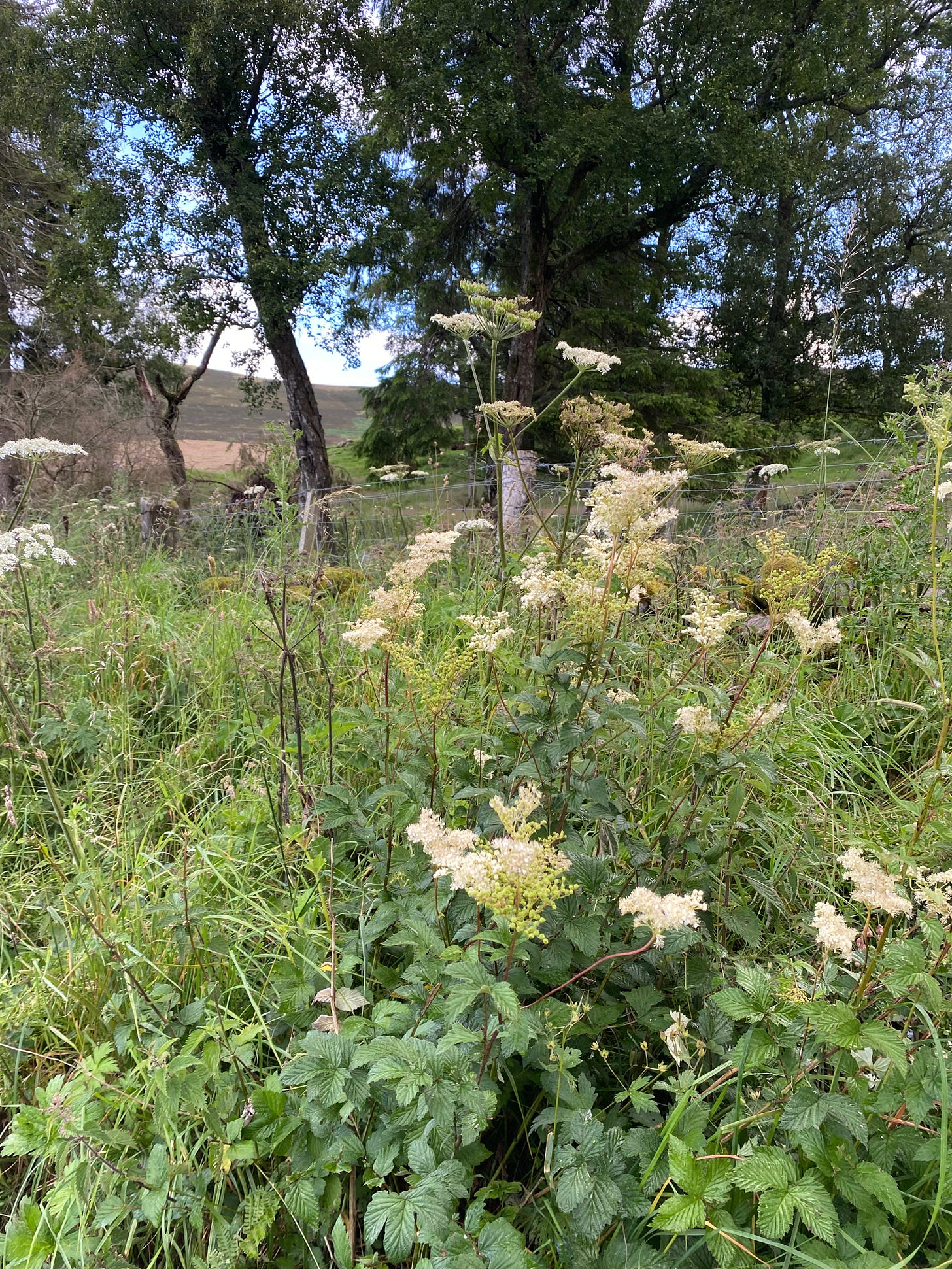

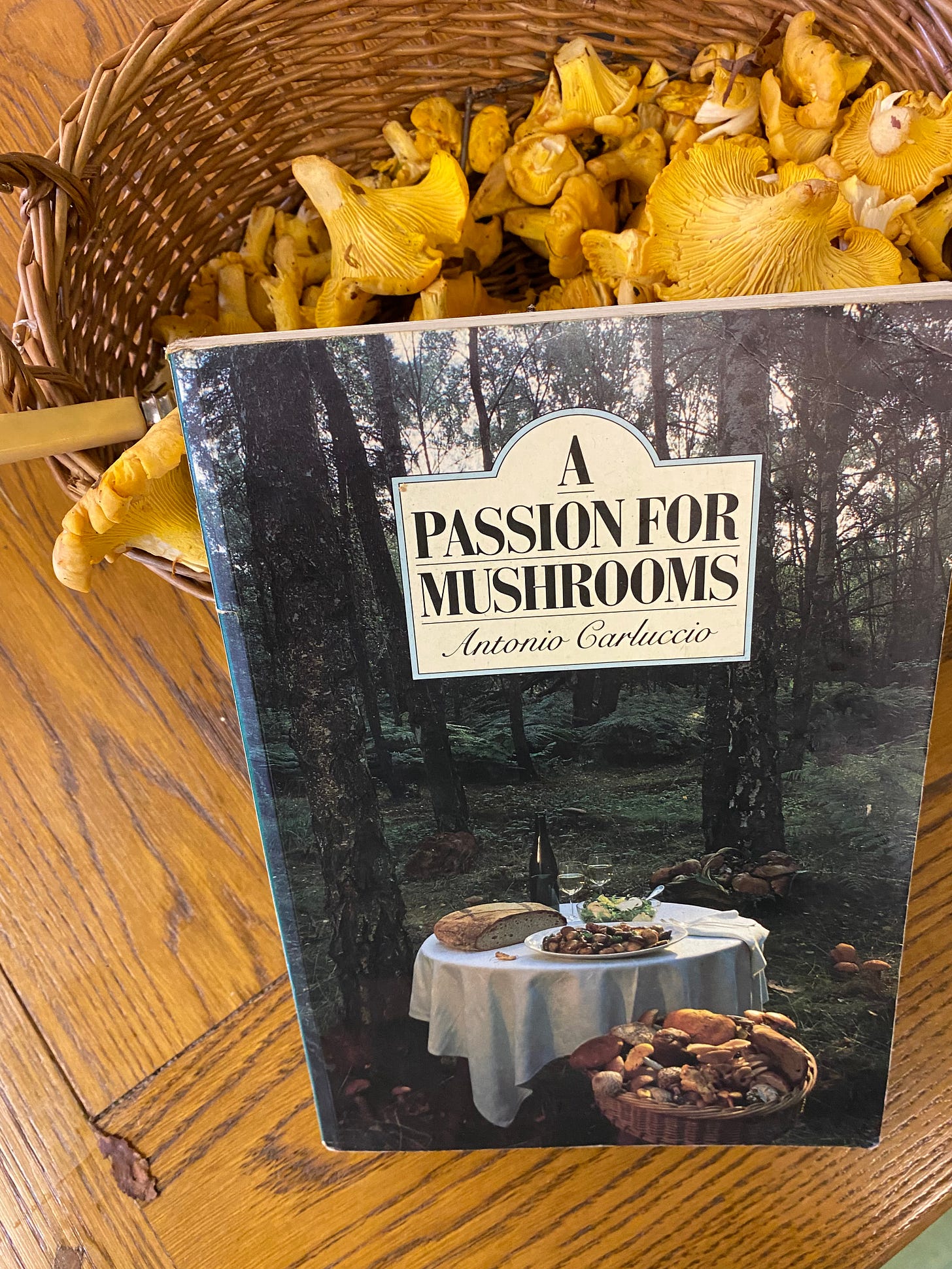
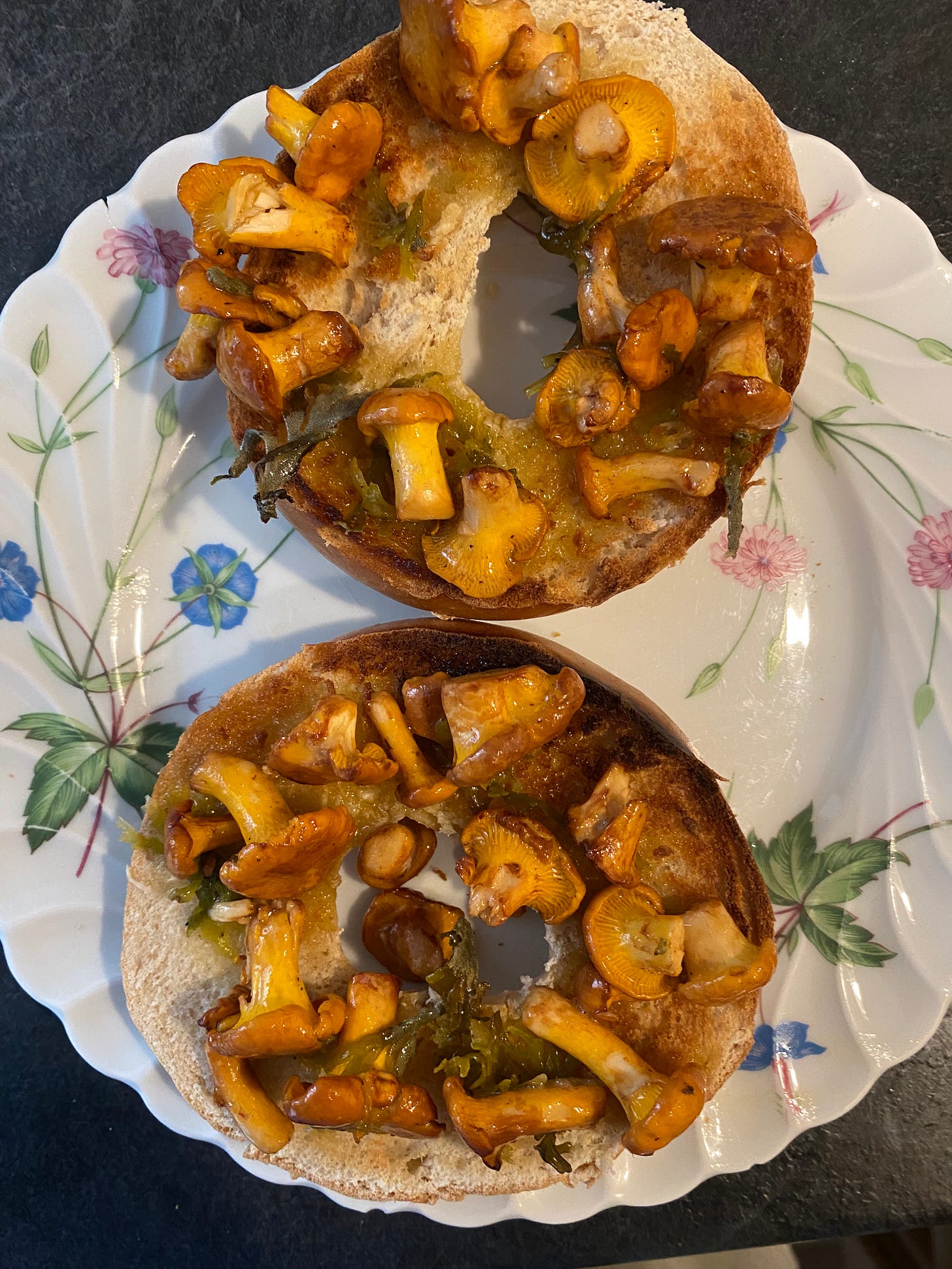
Definitely the crock of gold at the rainbow’s end - and a very good lining for any stomach
In Maine, where it seems to have rained constantly since almost the beginning of June (with the exception, curiously enough, of Wednesdays), St Swithin's had better be fair. The apples have had sufficient blessing to last till harvest and our waterlogged gardens could use a respite. I love all this information, old folk tales that contain so much wisdom. Thank you, Fiona!